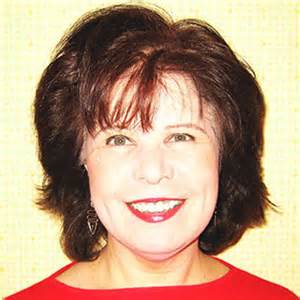editor’s note: We interviewed Nancy Kress in 2009–feel free to check that interview out as well.
Nancy Kress is an award winning author, Asimov’s regular, and workshop instructor. She authors a book in Writer’s Digest‘s “Write Great Fiction” series and was a columnist for Writer’s Digest. Here she offers how-to insights into character development.
CARL SLAUGHTER: Humans are complicated. How does a writer know when to develop a character through personality, feelings, experiences, biochemical makeup, relationships, circumstances, motives? When to emphasis which aspect of a person? Are certain aspects of a character inherently more useful for storytelling?
NANCY KRESS: That’s a complicated question! The most useful aspect of a character for story-telling purposes is motive: What does this person want and why? That’s what drives plot. A character’s personality will determine how he tries to get what he wants (earning it, stealing it, getting someone else to provide it, etc.) and how he handles frustration along the way. The character’s prior “experiences” (otherwise known as backstory) are good for the writer to know in order to provide the character with the feelings, relationships, and reactions that will make him vivid to the reader. Each of these elements is important.
How to know when to take the reader into the character’s head versus letting the character express themselves versus letting the reader discern through the character’s actions?
What feels natural? If it’s natural for this particular character in this particular situation to express his feelings directly through dialogue, let him do it. If his actions make his feelings clear (“James hurled the frying pan at Pamela”), then do that. If your character is inarticulate or has no one around to express to, then take us into his thoughts. The biggest mistake I see in student writing is not going deeply enough into a character’s point of view.
How to determine whether a character should evolve, devolve, or remain flat? Do you start with a character who is predetermined to evolve/devolve, or do you build a plot and let the plot determine whether the character should evolve/devolve?
The latter. I do believe that nearly all protagonists should change in some way , after all, if the events of the story don’t affect him, why should they affect the reader? How he will change is something I often don’t know until I’m about halfway through the book. Then I must go back on rewrite and set up the foreshadowing that makes it believable that this character can and will change in that specific way.
When to use sinister character versus victim/hero and when to give every character a legitimate motive and a compelling case?
Always. Every character must be believably motivated, and that includes the villain (sinister or not). When characters do things not from their own reasons but because the plot requires it, the whole story collapses. Their reasons may be 180 degrees away from objective reality (“I know that I’m Napoleon reincarnated”), but the writer still must convince us that the character believes it.
How to integrate premise, plot, and theme into character development.
Premise is the situation the character finds himself in, and it should appear fairly early on in the narrative. Plot is how he deals with that situation, which in turn is determined by his character. For example, Luke Skywalker in STAR WARS finds a hologram of Princess Leia begging for help from someone named Obi-Wan. Another boy might have shrugged and erased the holo, or tried to sell R2D2 on eBay, or whatever. Because of Luke’s personal character (plucky, curious, bored to death on Tatooine), he goes looking for this Obi-Wan, and the plot is off and running.
Do we really need to know that a character wears a goatee, listens to Bach, uses standard language instead of colloquialisms, and prefers omelet over scrambled? How does a character’s appearance or lifestyle help the reader understand and appreciate the story?
All those things can help readers (1) visualize the character, (2) learn something about his socioeconomic background, and (3) identify with him (or not, if that’s what the writer wants). People form first impressions of other people in seconds, and those impressions are remarkably sturdy. Use details to make sure we have the first impression of your protagonist that you want us to have.
Most/least useful strategies for character interaction?
The most useful: dramatize. SHOW us your character talking with others, doing things with others, treating others well or badly or indifferently or exploitatively or tenderly. We want to be a fly on the wall observing your story, as if it were a play or movie. Least useful strategy: Nothing but dialogue. You actually aren’t a playwright or screenwriter,you have the added advantages of (1) being able to show us your character’s thoughts and (2) of using exposition to provide background. Use all the narrative tools available to you.
Common misconceptions aspiring writers have about character development?
The most common: “My readers understand what my character’s feelings are because they’re the same ones anybody would have in those circumstances.” No. People are amazingly varied. If you don’t provide enough dramatization of your character’s motives and emotions, we may misconstrue them entirely. Or,worse,assume the character is a big bore. Another common misconception is that saying “John was sad” amounts to showing emotion. You must make us feel his sadness.
Common mistakes writers make in developing characters?
Writing villains with no motivation other than pure evil.
Giving us too few details to grasp a character’s personality.
Having characters change without enough foreshadowing to show that they are capable of change.
Not taking us deep enough into a character’s POV.
Having all your characters sound exactly alike in dialogue.
Making heroes all-good and all-powerful.
Where can writers get book length advice from you?
I’ve written three books on writing: BEGINNINGS, MIDDLES, AND ENDS; DYNAMIC CHARACTERS; and CHARACTERS, EMOTION, AND VIEWPOINT. All are available from Writers Digest Books and on such book-selling sites as Amazon.com.
Where can writers workshop length advice from you?
I teach at various venues, depending on the year, but the two most consistent are at Hugo House in Seattle and at Taos Toolbox in Taos, New Mexico. The latter is a two-week intensive seminar in writing fantasy and science fiction.
Where can writers get article length advice from you?
I no longer write my column for WRITERS DIGEST MAGAZINE, but much of the same information is collected in my books on writing.
 Carl Slaughter is a man of the world. For the last decade, he has traveled the globe as an ESL teacher in 17 countries on 3 continents, collecting souvenir paintings from China, Korea, Thailand, Vietnam, and Egypt, as well as dresses from Egypt, and masks from Kenya, along the way. He spends a ridiculous amount of time and an alarming amount of money in bookstores. He has a large ESL book review website, an exhaustive FAQ about teaching English in China, and a collection of 75 English language newspapers from 15 countries.
Carl Slaughter is a man of the world. For the last decade, he has traveled the globe as an ESL teacher in 17 countries on 3 continents, collecting souvenir paintings from China, Korea, Thailand, Vietnam, and Egypt, as well as dresses from Egypt, and masks from Kenya, along the way. He spends a ridiculous amount of time and an alarming amount of money in bookstores. He has a large ESL book review website, an exhaustive FAQ about teaching English in China, and a collection of 75 English language newspapers from 15 countries.

